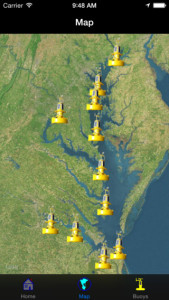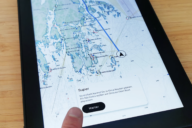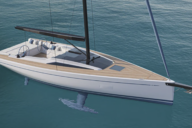We sailed by one of these on Wednesday and I wondered what it was. Turns out…
The National Oceanic and Atmospheric Administration’s (NOAA) Chesapeake Bay Interpretive Buoy System (CBIBS) is a network of observing platforms (buoys) that collect meteorological, oceanographic, and water-quality data and relay that information using wireless technology to a variety of users.
The latest data from key points up and down the Bay is available at this website, by calling toll-free 877-BUOY-BAY (877-286-9229), by visiting the mobile version of this website, or via apps available for Android and iPhone smartphones.
The CBIBS “smart buoys”:
- deliver real-time data on weather, water conditions, and water quality;
- support high-quality science education and enhance the delivery of experiential outdoor education; and
- interpret points along the Captain John Smith Chesapeake National Historic Trail and enhance the experience of trail users.
CBIBS provides users, including scientists, boaters, and students, with information they need. Scientists use data to further protect, restore, and manage the Chesapeake Bay. Students can learn about the Bay and their environment by exploring the data. Boaters can plan a safer day by knowing the conditions on the Bay before they leave shore.
CBIBS was launched in 2007—Jamestown was the first buoy deployed—to commemorate the 400th anniversary of Captain John Smith’s exploration of the Chesapeake Bay. Three buoys were deployed each year in 2007, 2008, and 2009, and one buoy was launched in 2010, bringing the total to ten. The three northernmost buoys (Susquehanna, Patapsco, and Upper Potomac) are pulled each winter to avoid the potential for ice damage.











